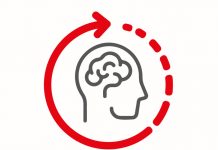I’ve been lucky enough to teach executives from companies including Oracle, Telefónica, Chevron Philips and Banco Santander the past few weeks in a busy pre-Christmas travel schedule that has included the Middle East, Madrid and Barcelona. We’ve focussed on themes including stress and workload in expatriate assignments, leading in the Fourth Industrial Revolution and of course, the tried and tested strategies of executive health and performance.
A recurring theme in the many conversations has been the relationship with our “significant other” and I don’t mean spouse, rather our mobile devices. In many cases, our ingrained habits of use are so automatic we’re often not fully aware of our actions and the effects these have on relationships, both personal and professional. It is far from the mindful leadership we should be aiming for to succeed in the future of work.
We believe ourselves to be rational beings, acting on the logic of any given situation, yet research in many fields, particularly within the area of circadian rhythm science, shows otherwise. The day-to-day business life is an ideal lens for understanding this research and offers a rich context. On average, people are worse at processing new information, planning and resisting distractions as the day progresses. Decision fatigue theory points to the lower quality of our decisions as the day advances, with good decisions also dependent on mealtimes and eating the right food. Have you ever had a “hangry” child? What makes you think a lack of food would have any different effect on an adult?
Ethics also are at the mercy of our biology. When energy is low, people are more likely to behave unethically with people having a greater tendency to lie in the afternoon than in the evening. Researchers call this “psychological depletion” reflecting our experience of being cognitively weaker as the day wears on.
We are also at the mercy of our body’s chemistry. Chemicals may rise and fall at different parts of the day in accordance with our circadian rhythm or as a result of different habitual actions, which helps to re-enforce such habits. By understanding the processes at play we may better control such impulses when they arrive. The Stoic school of philosophy, which counted on high-profile proponents such as Roman Emperor Marcus Aurelius, often highlight how our impulses often derail our best intentions. The chemical balance of the brain is critical – imbalance can result in behavioural disorders, anxiety, depression and schizophrenia. So what are some of the main chemicals we should take into account?
Cortisol
Cortisol is the stress hormone which is produced naturally as part of our circadian rhythm. Levels peak shortly after waking, giving us the necessary “oomph” to get going. Stress can be positive or negative – Canadian biochemist Hans Selye first defined two types of stress in 1936, eustress (good stress) and distress (bad stress). We need stress to learn and perform and also produce it in response to a perceived threat, as part of the “fight-or-flight” mechanism. Once the alarm to release cortisol has been sounded, your body becomes mobilised and ready for action (supported also by the release of adrenaline which increases your heart rate and blood pressure). If there is no physical release of this fight-or-flight response – typical within a sedentary working environment where threats are information-based and psychological – a build up of cortisol can cause a variety of physical and mental problems.
In our research, we have found the benefits of simple coping mechanisms such as controlled diaphragmatic breathing, which we have covered previously in this column here. Fight-or-flight, the sympathetic part of our nervous system, characterises many busy professionals who go through their days in a heightened state of arousal, responding to crises, eating poorly, taking stimulants and being constantly online. We have used Heart Rate Variability (HRV) analysis in our executive training to show a return to the parasympathetic (or recovery) part of the nervous system.
The chemical balance of the brain results in different positive and negative psychological states, from happiness to depression.
Serotonin
Serotonin is the well-being hormone and one of the key neurotransmitters, the chemical “messengers” in our brain. It is responsible for the regulation of mood, aggression, appetite and sleep. On an evolutionary level, serotonin gave an organism “good feelings” towards its environment, and low levels of serotonin sparked dissatisfaction to urge the organism to relocate and/or change habits. Low serotonin levels result in increased appetite and vice versa. Depression, which is often caused by low serotonin levels, may lead to augmented food consumption while exposure to light can increase Serotonin.
Stanford Marketing professor Baba Shiv highlights the importance of Serotonin in decision-making, creativity and leadership. He values its role in providing a calm, relaxed state as well as minimising the negative effects of stress, believing it to support a opportunity-centric Type II mindset (as opposed to a Type I mindset that focuses on risk and failure). He highlights the decrease of Serotonin throughout the day and also when we reach the age of 50, advising that organisations design teams to include different ages in their teams to balance mindset. His principal recommendations come in the areas of exercise, diet and sleep, most of which we have covered in this column.
Dopamine
Dopamine is the reward hormone and plays a role in many forms of addiction, from drugs and food, to modern-day “addictions” such as social media and smartphones. It is more than the pleasure chemical, a common misconception, as it represents the first part in the process, where reward is noticeable or better than expected. The brain is told to pay attention to the stimulant in question as it may be important for survival in the future, prioritising it over older, more predictable rewards. Many researchers believe it is more about drug wanting than liking. The anticipation and unpredictability of the drug in question, say social media use through red bubble notifications, is therefore the main reason for persistent use in spite of negative consequences. The negative consequences of heroin or alcohol are of course well known with greater understanding beginning to emerge also on digital device addiction, compromised wellbeing being the main result. Social media designers play on the brain function associated with dopamine, with features such as notifications appearing after a short delay (likened by some as playing a slot machine) in order to maximise the brains anticipation and levels of dopamine.
As we approach the end of another calendar year reflecting on some of our rhythms is a useful exercise. The awarding of the 2017 Nobel Prize in Medicine or Physiology for research on the circadian rhythm show its great importance for our modern world and is an area we believe will become even more important as we move further into the Fourth Industrial Revolution. Thanks for reading this year and may I wish you a very happy and restful holiday, and healthy and successful start to 2018. Perhaps a digital detox isn’t such a bad idea?
This months article was adapted from Chapter 8 in the forthcoming Chief Wellbeing Officer book by Steven P. MacGregor and Rory Simpson (LID 2018).
About the Author
 Dr. Steven MacGregor, founder of The Leadership Academy of Barcelona [LAB] and author of Sustaining Executive Performance (Pearson 2015) , has delivered over 1000 sessions the past 5 years in executive health and behaviour change for clients including Telefónica, Danone, IESE, IMD, and the BBC. He holds a PhD in Engineering Design Management and has been a Visiting Researcher at Stanford and Carnegie-Mellon. His executive education teaching is informed by academic interest in sustainability and design and he is an article reviewer for, among others, Industry and Innovation, Journal of Engineering Design, and the International Journal of Design Creativity and Innovation.
Dr. Steven MacGregor, founder of The Leadership Academy of Barcelona [LAB] and author of Sustaining Executive Performance (Pearson 2015) , has delivered over 1000 sessions the past 5 years in executive health and behaviour change for clients including Telefónica, Danone, IESE, IMD, and the BBC. He holds a PhD in Engineering Design Management and has been a Visiting Researcher at Stanford and Carnegie-Mellon. His executive education teaching is informed by academic interest in sustainability and design and he is an article reviewer for, among others, Industry and Innovation, Journal of Engineering Design, and the International Journal of Design Creativity and Innovation.



































